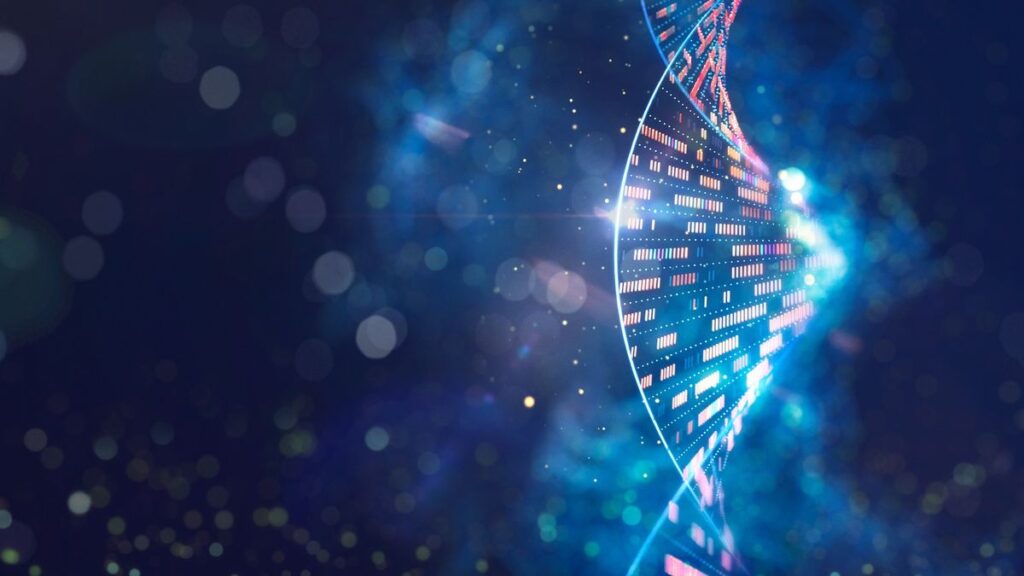DNA tests can tell people where in the world their ancestors came from, and if they’re at risk of developing different genetic conditions. They can sometimes even help people connect with family members they never knew they had.
But how do these DNA tests work, and how can they tell if two people are related to each other?
A genetic test typically involves submitting a saliva sample to a laboratory. Scientists then extract DNA from the saliva and compare that DNA to various reference samples from around the world. Around 99.9% of human DNA is identical across the whole human population, so the tests focus on the remaining segments that differ between individuals.
Once the DNA is extracted, scientists use a microarray, a small tool that contains thousands of sites, each of which binds to different variations of a DNA sequence. Those variations in DNA are passed down from an individual’s ancestors and influence a person’s personality and physical traits. Scientists use reference panels — genetic data from people with known ancestry, collected by the testing company or available in a public database — to determine regions of the world where different genetic variants are more or less common.
Fragments of DNA from the test bind to the sites on the array that correspond to the genetic variant that person has, giving clues to the person’s ancestry and family history. For example, if the test finds that a person’s DNA contains a variant that occurs only in people of Scottish descent, it’s likely they have some Scottish ancestry.
Related: Are you genetically more similar to your mom or your dad?
“Arrays are really powerful in that way because they’re very fast, they’re very robust, they’re very efficient, and they allow us to pick a set of markers from the beginning that we believe can maximize our ability to differentiate whether you’re more English, or whether you’re more Chinese or more Italian,” said Aaron Wolf, a senior population geneticist at the DNA-testing company Ancestry.

There’s no single variant that can definitively determine a person’s ancestry. “It really is this kind of compounding effect where the variation in the frequency of the marker gives us a little bit of a hint in one direction or another,” Wolf told Live Science. “It’s the cumulative effect across all of those different markers that gives us the confidence to give you the origins report.”
To determine whether two individuals are related, the process is somewhat similar, but both people need to take a DNA test. The first step is to find out how much of their DNA is identical, Wolf said. Each genetic testing platform has algorithms that can compare one person’s DNA to the DNA of everyone else in their database and quickly identify long stretches of matching DNA.
Scientists already know how much shared DNA is expected for a given familial relationship, so they can then use the data from the tests to determine the likelihood of two people being related — and the possible relationships between them — based on how much DNA they share. More shared DNA generally indicates a closer relationship; for example, a parent and their child will share around 47.5% to 50% of their DNA, while grandparents and grandchildren, aunts and uncles to nieces and nephews, and half-siblings share around 25% of their DNA, according to 23andMe. Even less DNA is shared with more distant relations: first cousins share about 12.5% of their DNA and second cousins share 3.13%.
The results of a genetic test present the possible relationships between two individuals in order of probability. Sites like Ancestry and 23andMe compare an individual’s DNA to the DNA of their entire customer base to find possible family connections.
Paternity tests work similarly. The test compares short tandem repeats (STRs) — long sections of DNA composed of repeated short segments — from both the potential parent and the fetus or child. If there are enough identical STRs, it’s very likely the two are related.
As reference panels become more robust and more people submit genetic tests, more family connections and ancestral insights will become available, Wolf said. “We’ve certainly been developing a lot of features in the origins that allow individuals to have more resolution about where in the world they can connect their DNA to, bringing that into a framework that’s very relatable to their family history.”
